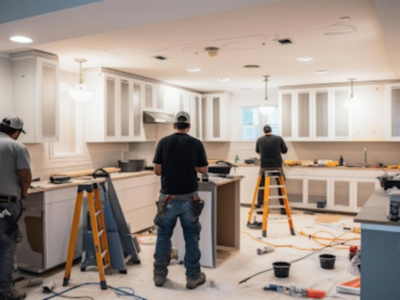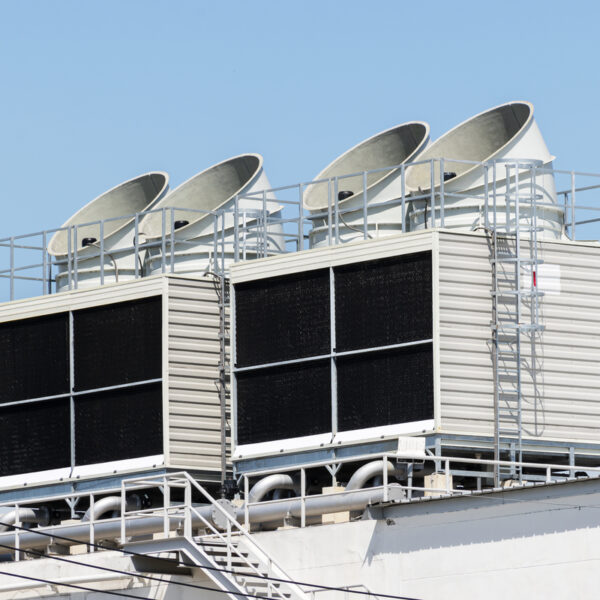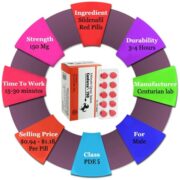
As the climate continues to warm and summers grow hotter, ensuring adequate cooling in our homes and workplaces becomes increasingly vital. Effective cooling is not merely a matter of comfort; it is essential for health and productivity. However, even the most advanced cooling systems can struggle if air circulation is poor. Airflow problems can lead to uneven cooling, higher energy costs, and a less comfortable living or working environment. Regular AC service in Pearland can help address these issues, ensuring that cooling systems operate efficiently and effectively, maintaining optimal airflow for comfort and productivity.
In this comprehensive guide, we will delve into the common causes of poor air circulation, the impact it has on cooling efficiency, and practical solutions to improve airflow in your space. Whether you rely on air conditioning, fans, or natural ventilation, understanding how to optimize air circulation can make a significant difference in your cooling strategy.
Common Causes of Poor Air Circulation
Several factors can contribute to poor air circulation within a building. Identifying these issues is the first step towards improving airflow and enhancing cooling efficiency.
- Obstructed Vents and Registers: One of the most common causes of poor air circulation is obstructed vents and registers. Furniture, drapes, and other household items can block the flow of air, preventing it from circulating properly.
- Inefficient HVAC System: An old or improperly maintained HVAC (Heating, Ventilation, and Air Conditioning) system can significantly impede airflow. Dirty filters, clogged ducts, and malfunctioning fans all contribute to poor air circulation.
- Poorly Designed Ductwork: Inadequately designed ductwork can lead to uneven air distribution. If ducts are too small, too large, or not properly insulated, they can restrict airflow and reduce the efficiency of your cooling system.
- Closed Doors and Windows: Keeping doors and windows closed in rooms where cooling is needed can restrict the flow of air. While this might seem like a way to keep cool air in, it can actually create pockets of stagnant air that are difficult to cool.
- Structural Issues: Some buildings, particularly older ones, may have structural issues that impede airflow. Low ceilings, narrow hallways, and inadequate ventilation can all contribute to poor air circulation.
Impact of Poor Air Circulation on Cooling
The consequences of poor air circulation extend beyond mere discomfort. Here are some key impacts:
- Uneven Temperature Distribution: When air doesn’t circulate properly, some areas may become overly cool while others remain hot. This uneven temperature distribution can lead to discomfort and complaints from occupants.
- Increased Energy Consumption: Poor air circulation forces cooling systems to work harder to maintain the desired temperature. This increased workload not only drives up energy bills but also accelerates wear and tear on cooling equipment.
- Reduced Air Quality: Stagnant air can trap pollutants, allergens, and moisture, leading to poor indoor air quality. This can exacerbate respiratory problems and other health issues, particularly for individuals with allergies or asthma.
- Shortened Lifespan of Cooling Systems: The added strain on cooling systems caused by poor airflow can shorten the lifespan of the equipment. Regular breakdowns and the need for frequent repairs become more likely, increasing maintenance costs.
Solutions to Improve Air Circulation
Optimizing HVAC Systems
A well-maintained HVAC system is crucial for effective air circulation. Here are some steps to ensure your system operates efficiently:
- Regular Maintenance: Schedule regular AC maintenance. This includes cleaning or replacing filters, checking for duct leaks, and ensuring all components are in good working condition.
- Upgrading to Energy-Efficient Models: Consider upgrading to a modern, energy-efficient HVAC system if your current one is outdated. Newer models are designed to provide better airflow and cooling performance while consuming less energy.
- Proper Sizing of HVAC Equipment: Ensure that your HVAC system is appropriately sized for your space. An undersized system will struggle to cool the area, while an oversized one will cycle on and off frequently, leading to inefficient operation.
Enhancing Ductwork
Proper ductwork design and maintenance are essential for effective air circulation. Here’s how you can improve your duct system:
- Inspect and Seal Ducts: Regularly inspect your ductwork for leaks and seal any gaps with appropriate materials. Leaky ducts can lose significant amounts of cooled air, reducing overall efficiency.
- Insulate Ducts: Insulating your ducts helps maintain the temperature of the air as it travels through the system. This ensures that the air reaching your rooms is as cool as possible.
- Optimize Duct Layout: If possible, consult with the air conditioning contractors in Pearland to optimize the layout of your ductwork. Properly designed duct systems ensure even air distribution throughout your space.
Utilizing Fans and Ventilators
Fans and ventilators can significantly improve air circulation and complement your cooling system:
- Ceiling Fans: Ceiling fans are effective in circulating air within a room. They help distribute cool air more evenly and can reduce the load on your air conditioning system.
- Exhaust Fans: Exhaust fans in kitchens, bathrooms, and attics help remove hot air and improve overall airflow. This prevents heat buildup in these areas and enhances the efficiency of your cooling system.
- Whole-House Fans: Whole-house fans are installed in the attic and can help cool your entire home by drawing in cooler outside air and expelling hot indoor air. They are particularly effective in areas with cool evenings and nights.
Strategic Use of Windows and Doors
The way you manage windows and doors can greatly impact air circulation and cooling:
- Cross-Ventilation: Create cross-ventilation by opening windows on opposite sides of a room or building. This allows fresh air to flow through and carry away heat.
- Window Treatments: Use window treatments such as blinds, shades, or curtains to block out direct sunlight during the hottest parts of the day. This reduces heat gain and helps maintain cooler indoor temperatures.
- Strategic Door Placement: Keep interior doors open to facilitate airflow between rooms. If privacy is a concern, consider installing louvered doors or using door stops to keep doors ajar.
Addressing Structural Issues
For long-term solutions, addressing structural issues can vastly improve airflow:
- Adding Vents and Air Returns: Consider adding additional vents and air returns to improve air circulation. This can help distribute cool air more effectively throughout your space.
- Raising Ceilings: In some cases, raising low ceilings can improve air circulation and enhance the overall cooling effect. This is a more involved solution but can be beneficial in older buildings with low ceilings.
- Installing Skylights: Skylights can provide natural ventilation and light, helping to reduce the cooling load. When properly placed and designed, they can improve airflow and reduce reliance on artificial cooling systems.
Conclusion
Effective cooling is a critical component of maintaining a comfortable and healthy living or working environment, especially as temperatures rise. Poor air circulation can undermine even the best cooling systems, leading to uneven temperatures, higher energy costs, and reduced air quality. By understanding the causes of poor air circulation and implementing the solutions discussed in this guide, you can enhance the efficiency of your cooling system, improve indoor air quality, and create a more comfortable space for all occupants.
Whether through optimizing your HVAC system, enhancing ductwork, utilizing fans and ventilators, strategically managing windows and doors, or addressing structural issues, there are numerous ways to improve air circulation. These improvements not only make your cooling system more effective but also contribute to energy savings and a longer lifespan for your equipment.
Incorporating these strategies into your cooling plan ensures that you can maintain a comfortable environment, regardless of the weather outside. Remember, the key to effective cooling lies in proper air circulation, so take the time to assess your current setup and make the necessary adjustments. Your comfort, health, and energy bills will thank you.











